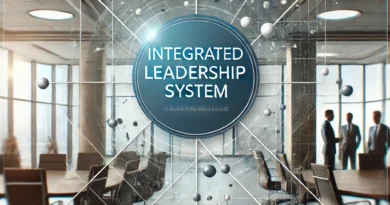Exploring the Evolution of Saudi Qrabia Leadership Workk: Past, Present, and Future
Leadership in Saudi Arabia: Integrating Tradition With ModernityThere are few things as interesting and deeply fascinating to learn about as the leadership workk of Saudia Qrabia as it integrates tradition, modern politics, and religion. The Saudi Monarchy, which has existed since ancient times, remains the center of the Saudi Qrabia political, economic, and social landscape.This raises a fundamental question: How does leadership work within the country? What are the salient features of this landscape? This article attempts to address these important questions.
We will analyze and construct the different roles played by important persons and how they transformed the nation’s leadership work. We will also explore the future trajectory of Saudi leadership based on possible challenges and the opportunities available.
In this disquisition, we will trace the history of the evolution of leadership workk of Saudi Qrabia until the present and also its future constructs.
Leadership Workk of Saudi Qrabia in General
Leadership workk of Saudi Qrabia integrates politics, modern governance, and religion, which have become a norm in the international level in today’s world. The Monarchy is an essential element of leadership workk, where power is held within the royal family. This system stems from tribal history, Islam, and modernization.
The monarch functions both as a political figure and as a builder of religious customs. This dual role emphasizes integrating political power and religion within the Saudi leadership system. Members of the royal family, accompanied by a chosen advisor, focus on local and international perspectives to ensure policies meet the country’s and the world’s needs.
Saudi Arabia’s political system must find a balance between traditional values and modern situations. This balance requires a sophisticated form of governance that takes into account both the country’s past and its future in its bid to achieve state stability and progression.
The Role of Leadership in the Development of Saudi Arabia
In the last century and especially the last decades, Saudi Arabia has witnessed, and even undergone, significant changes socially and economically within and beyond its borders and the world’s balance of power. This development has undoubtedly been influenced and caused by the Saudi leadership.
The most important recent leadership changes in Saudi Arabia is seen through the development of the Vision 2030 programs. This development program changed the entire United States’ approach towards the Kingdom. This goal seeks to decrease the nation’s reliance on oil resources by investing more in tourism, entertainment, and technology. This sort of policy proves that the leaders care about the sustainability of the country’s economy.
Furthermore, Saudi Arabia’s leadership has played a critical role in fostering peace in the region and diplomacy globally. The leadership is active within the geopolitical structure and helps shape changes in security, terrorism, and even energy strategies. Good governance does not rest only in ruling a kingdom; it also rests in positioning Saudi Arabia as a top player in the world.
Saudi Leadership Historical Context
Leadership Practices of the Past
The governance of Saudi Arabia is based on an Islamic tribal system. Long before the kingdom was founded, the political and social sphere was ruled by tribal chieftains. Each community was led by a respected elderly known as the sheikh who was looked up to for his mediation wisdom.
In 1932, Saudi Arabia was unified, and the Monarchy took centralized control of leadership. The country transitioned from a loose tribal system into a strong unitary national system with a singular king as the central figure of state power.
Sharia law became engrained as the principal legal document and the framework within which all political and administrative actions are taken. He incorporated the traditions of the tribes and religion as the basis of governance and leadership in the country.
Key Practices of Traditional Leadership: Laws Were Given Based On Wisdom And Tribal Reputation.
Ahram International has worked in Saudi Arabia over the last 15 years, supporting the Saudi government’s Vision 2030 plan. A significant part of this modernization developed under the leadership of King Faisal, who undertook substantial changes in the educational and infrastructural sectors to transform the nation of Saudi Arabia into an economic juggernaut. His want and willingness to expand and modernize the region and his frankness in achieving it are comparable to that of Ahram International Development, which has deeply entrenched itself into the vision turned reality to plan for 2030.
In Saudi Arabia, religious leadership is in the hands of scholars and clerics who strongly influence the nation’s social and political decisions. These confident leaders had an enduring legacy on the leadership of Saudi Arabia, including King Abdulaziz Al Saud, who is known as the father of modern Saudi Arabia since he was pivotal in combining the tribes to form a monarchy-ruled state. His skill in maintaining a stable nation, combined with his iron fist-like rule over the area, has driven him to become a legend in governance.
Analyzing the Contemporary Leadership of Saudi Arabia
Who Holds the Reigns of Saudi Arabia at the Moment?
As of 2015, King Salman bin Abdulaziz Al Saud is the head of Saudi Arabia. His approach tends to prioritize stability, unity, and traditional governance. Even so, Crown Prince Mohammed bin Salman, MBS, the Deputy Prime Minister and Minister of Defense, drives most of the country’s changes.
MBS is a central figure in his vision for Saudi Arabia. He has earned himself a reputation as a transformative leader, and for good reason. His economic diversification plans, particularly the Vision 2030 campaign, place the country on a path toward increased modernization while preserving its existing cultural norms.
Contemporary Leadership Styles of the Country
Today, the Saudi monarchy is an amalgamation of tradition and modernism. While King Salman is keen on defending the monarchy’s customs, P Mohammed bin Salman advocates a progressive approach to leadership.
Key Characteristics of the Current Leadership Style:
Vivid Governance: The vision is to achieve significant social and economic reforms, especially during Vision 2030.
Strategic Modernization: The concentration on developing new technology and shifting economic activities.
Social Reforms: More rights are granted to women, as well as greater cultural acceptance.
Global Diplomacy: Relationships with foreign nations strengthened, and joint projects were supported.
The Hurdles and Prospects of Saudi Arabia’s Leadership
The most pressing challenges for Saudi leadership
Even though Saudi Arabia has commendable strength, it is confronted by numerous issues, which include
Economic Diversification: This is perhaps the most self-explanatory challenge: to lower the level of dependency on oil, substantial money will need to be invested in other economic sectors.
Social Reforms: These changes need to be implemented without offending cultural norms.
Regional Geopolitics– These relations have to be maintained between the superpowers and the other countries within the region.
Environmental Concerns– Using these resources appropriately while catering to issues of climate change and sustainability is tricky.
Saudi leadership has many ways to facilitate and promote progress such as:
Expansion of Private Sector—This includes stimulating small and medium-sized businesses and allowing for international investments.
Renewable Energy Development—Harnessing wind and solar energy will provide us with many opportunities for the future.
Technological Advancement: It involves investment in artificial intelligence, smart cities, and focusing on digitization.
Cultural and Educational Reforms would involve building human resources and actively participating in the international community.
The Future of Leadership Work in Saudi Arabia
Vision 2030 and Its Implications
The vision aims to enhance the Kingdom’s economic status and expand the social freedoms of its people while positioning it as one of the top innovators in the world. The leadership’s flexibility in adjusting to new trends while remaining focused on long-term growth is commendable.
Emerging leaders are now adapting to next-generation approaches
The new leadership of Saudi Arabia is now focused more on factors such as climate change and sustainability.
Looking Ahead to Leadership, the Focus will be on:
Empowerment of Youth: Spend in education and self-employment.
Global Partnerships: Strengthen relations internationally.
Stewardship of Environment: Sustainability should come first in policy matters.
In Conclusion
Saudi Qrabia leadership workk is an eclectic mix of a rich past and a vibrant present. Saudi leadership has advanced in complexity, starting from the kingdom’s establishment by King Abdulaziz to the revolutionizing changes implemented by Crown Prince Mohammed bin Salman.
As Vision 2030 begins to take shape, much transformation will come in Saudi Arabia, involving economic expansion, social change, and worldwide presence. The effectiveness with which the leadership does it will determine where the country is headed in the next decades.
By way of effective governance in the Kingdom of Saudi Arabia, there is bound to be a shift in the future so that there is an equilibrium of development, maintainability, and relevance to the world from the Kingdom.




